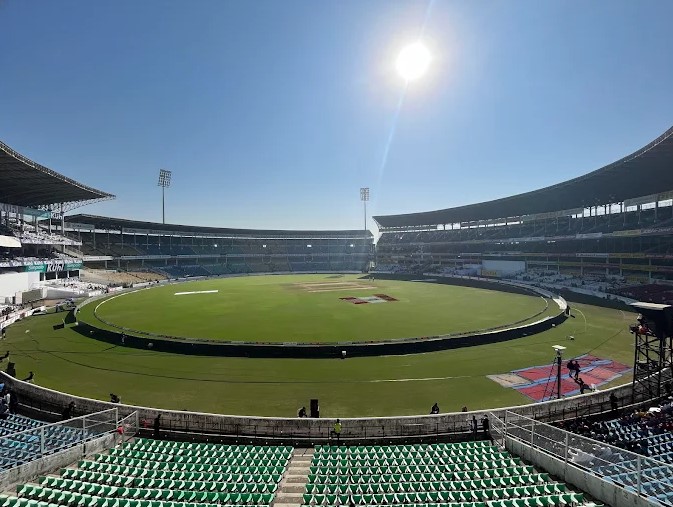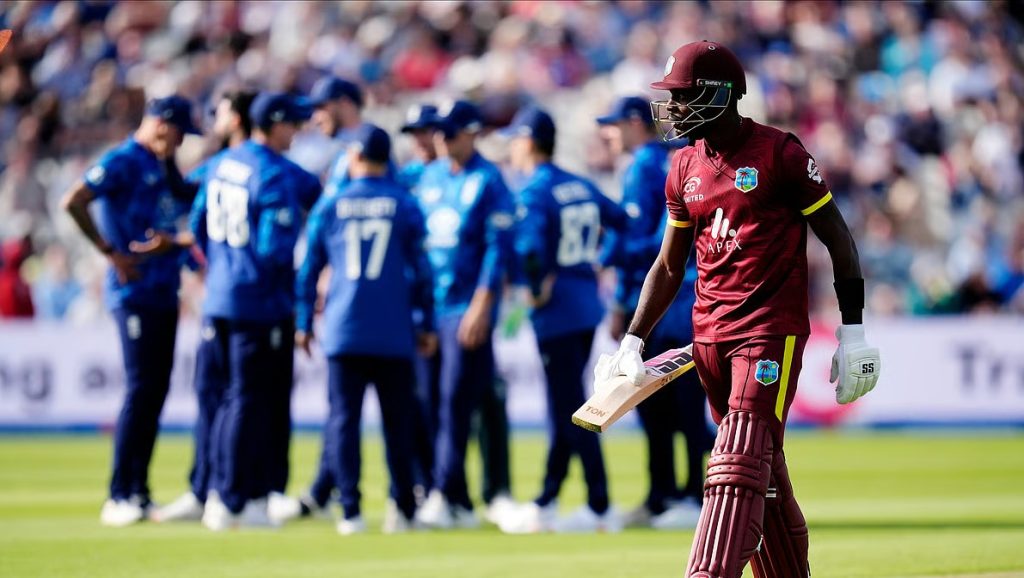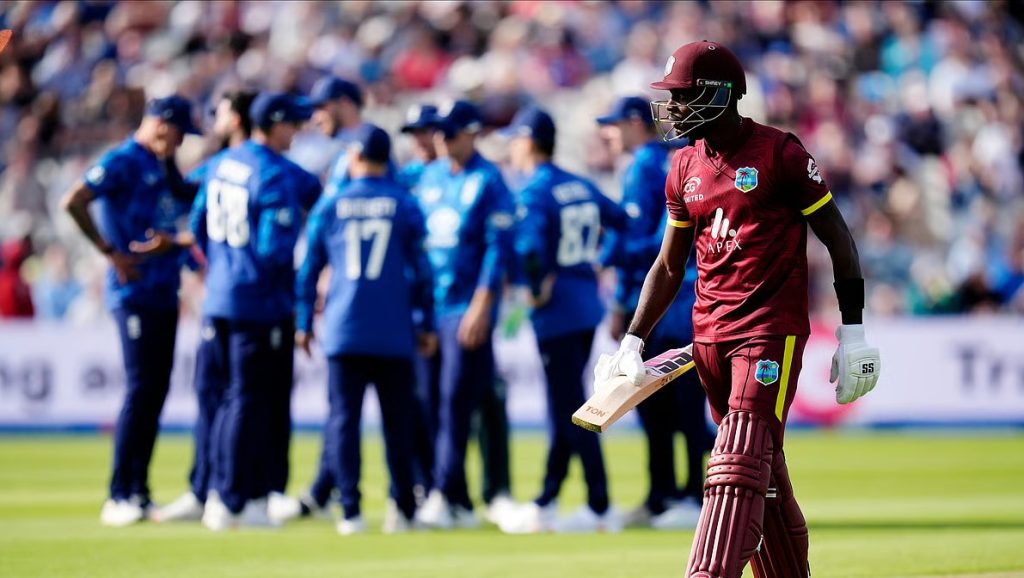Boundary Lengths at Nagpur Cricket Stadium
Nagpur Cricket Stadium: Cricket is a sport where dimensions play a subtle yet powerful role in influencing the outcome of a game. Among these, boundary lengths are particularly important. At the Vidarbha Cricket Association (VCA) Stadium in Nagpur, Maharashtra, the size and layout of the ground are known to impact match dynamics, especially in T20s and One Day Internationals (ODIs).
Table of Contents
1. Overview of Nagpur Cricket Stadium
The VCA Stadium is India’s largest cricket stadium by field area. Opened in 2008, it replaced the older stadium located in the city center. Known for its modern amenities, it has hosted numerous high-profile matches, including World Cup games and India-Australia thrillers.
Key Features:
| Feature | Details |
|---|---|
| Location | Jamtha, Nagpur, Maharashtra |
| Capacity | 45,000 |
| Established | 2008 |
| Ends | VCA Pavilion End, North End |
| Home Team | Vidarbha Cricket Team |
| International Matches | Tests, ODIs, T20Is |
The stadium is famous for its large playing surface, which makes clearing boundaries more challenging compared to some other Indian grounds.
2. Boundary Dimensions: Detailed Breakdown
The boundary lengths at Nagpur vary significantly depending on the direction. Let’s break them down by sector.
Boundary Lengths (Approximate)
| Direction | Length (in meters) |
|---|---|
| Straight Boundary | 75 – 80 m |
| Square on the Off-side | 65 – 68 m |
| Square on the Leg-side | 65 – 68 m |
| Long-on and Long-off | 72 – 75 m |
| Third Man (Deep) | 60 – 64 m |
| Fine Leg (Deep) | 60 – 63 m |
| Deep Mid-Wicket | 74 – 77 m |
| Deep Cover | 73 – 76 m |
These figures are based on average measurements from official sources and game-day configurations. Depending on the pitch being used and the match format, these can be adjusted slightly within ICC regulations.
3. How Boundary Size Affects Gameplay
a. Batsman’s Perspective
Shorter boundaries often aid batsmen in scoring quick runs, especially in T20s. However, at Nagpur, the larger square boundaries and longer straight hits demand:
- Better timing and placement.
- Greater physical strength to clear the rope.
- Tactical awareness to pick gaps over brute force.
b. Bowler’s Perspective
For bowlers, particularly spinners, the large dimensions can be an advantage:
- Spinners can invite false shots by tempting batsmen to go big.
- Pace bowlers use cross-seam and slower balls, making use of the longer boundary to force mistimed shots.
4. Comparison with Other Indian Stadiums
| Stadium | Avg. Straight Boundary | Avg. Square Boundary |
|---|---|---|
| VCA Stadium, Nagpur | 75 – 80 m | 65 – 68 m |
| Wankhede, Mumbai | 65 – 70 m | 60 – 65 m |
| Chinnaswamy, Bangalore | 68 – 72 m | 60 – 65 m |
| Eden Gardens, Kolkata | 70 – 75 m | 65 – 67 m |
| Narendra Modi Stadium, Ahmedabad | 75 – 78 m | 70 – 74 m |
As the table shows, Nagpur’s boundaries are larger than most Indian grounds, especially square boundaries, which can exceed 68 meters. This adds to the challenge for attacking batsmen.
5. Historical Impact on Matches
Match Example 1: India vs South Africa, 2015 (Test Match)
In this low-scoring game, spinners dominated due in part to the long boundaries that made lofted shots risky. India won the match comfortably, defending modest totals.
Match Example 2: India vs Australia, 2019 (ODI)
Australia chased a competitive target, but the large boundaries slowed the scoring rate in the middle overs, giving bowlers a tactical edge.
Match Example 3: T20I, India vs Bangladesh, 2019
Even in a T20, bowlers could experiment with flight and variation, knowing batsmen had to clear longer distances. India used this to defend a relatively modest score.
6. Strategic Adjustments by Teams
Given the nature of the ground:
- Captains set deeper field placements for big hitters.
- Rotating strike becomes essential, as hitting boundaries isn’t always viable.
- Spinners operate with confidence, especially during the middle overs.
Fielding also becomes more demanding, as players must cover larger areas quickly.
7. Pitch and Weather Influence
Nagpur’s dry conditions often produce turning tracks, which combined with longer boundaries, make it a paradise for spinners. This has been used to India’s advantage in several Test and ODI matches.
| Factor | Effect on Gameplay |
|---|---|
| Dry pitch | Aids spin, harder to hit boundaries |
| Large outfield | Limits boundary scoring, favors singles |
| Humidity (day/night) | Can affect ball movement slightly |
8. A Balanced Cricketing Venue
The VCA Stadium in Nagpur presents a balanced challenge for both bat and ball. The long boundaries mean brute force alone doesn’t work — batsmen need skill and calculation, while bowlers must vary their lines and pace.
With boundary lengths averaging 68–80 meters, it’s one of the few Indian stadiums where class and technique often trump power. As cricket continues to evolve, grounds like Nagpur maintain the essence of a traditional contest between bat and ball — a blend of precision, patience, and power.
Key Boundary Data
| Type of Boundary | Average Length (in meters) |
|---|---|
| Straight | 75 – 80 |
| Square (both sides) | 65 – 68 |
| Deep Mid-Wicket/Cover | 74 – 77 |
| Third Man/Fine Leg | 60 – 64 |
Whether you’re a fan, player, or analyst, knowing the dimensions of Nagpur’s ground is essential for understanding its unique cricketing DNA.






